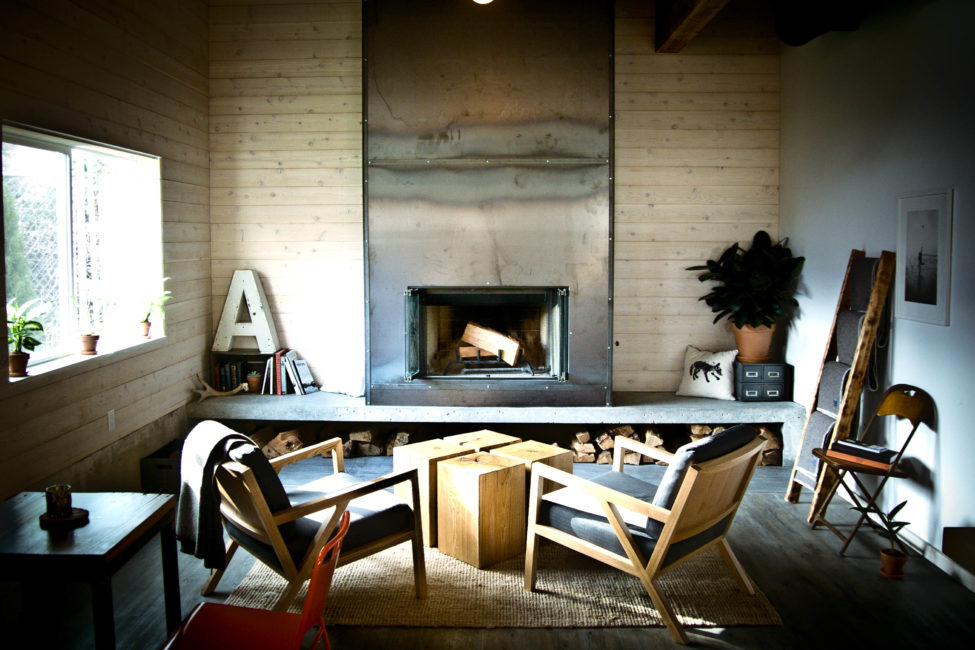A room with a brew: How interior design makes (or breaks) the brewery
By Kelsey Klassen
You would be forgiven for thinking that tasting room design has to date been mostly about which kind of wood you want on the walls and how shiny the concrete should be.
Look closer, though: amid the many superficial similarities lie design subtleties that – unnoticed at first – add up to establish the vibe of each brewery and reflect the surrounding community.
Take Brassneck, for example. If the Main Street microbrewery – one of the first craft breweries in Vancouver to have a distinctly “designed” aesthetic – hadn’t decided in 2013 that they wanted their tasting room to force strangers together into conversations about beer, the social nature of the craft beer boom that came after might have been very different.
“I have to say, I really tip my hat to Nigel [Springthorpe] and Conrad [Gmoser] at Brassneck. There was a lot of design intent to making sure that, in some ways, people were uncomfortably forced to be social,” says architect Marko Simcic, one half of the firm Simcic & Uhrich, which designed the brewery space. “We spent a lot of time talking about how you could get strangers to talk to each other.”
They accomplished that through interesting sight lines into the heart of the brewery operations, chance encounters with the brewer, intimate seating areas to discuss the latest seasonal, and by utilizing Vancouver creatives, such as the late woodworker Joseph Peters and illustrator Maggie Boyd, to add detail.
In hindsight, the success of the room, and other eloquent spaces such as 33 Acres, helped set the tone for what tasting rooms could and should accomplish.
“What’s been really interesting for us has just been seeing its impact on neighbourhood development,” says Bill Uhrich (the other half of Simcic & Uhrich, which boasts subsequent work with Strange Fellows, Dageraad, Andina, Faculty, Strathcona and a yet-to-be-named brewery at Manitoba and 5th in its portfolio, as well).
“Before the microbreweries started there was the expression, ‘No Fun City’ – Vancouver was a little bit archaic in terms of its approach to nightlife and the pub – and I think the way in which the microbreweries have grown [has] created a much larger sense of community. It’s had a spillover effect.”
Not only does the aesthetic of shiny equipment, polished concrete floors and textured wood walls reaffirm Vancouver’s familiar, organic, somewhat masculine design ideals, but it enriches the perception of craft beer as an honest, DIY endeavour, as well. As the industry expands into new markets in smaller cities around B.C., these design clichés also offer a proven way for new business owners to attract an audience.
“We always remind ourselves that what’s been done in Vancouver hasn’t been done in Abbotsford,” explains Josh Vanderheide, founder and creative director of Abbotford’s newest brewery, Field House.
Vanderheide, a former Vancouver resident who moved out to the Fraser Valley with his family three years ago, had worked extensively with craft breweries in his career as a graphic designer, and found himself missing aspects of the scene he had left behind. To recreate it, he and interior designer Jennifer Eden incorporated concepts that are clearly referential to spaces like Brassneck, 33 Acres, Steel & Oak and Strange Fellows, but also worked to transform them into something new and beautiful for their market.
“We said, we love these experiences, but what we need to do is run them through a filter of what would work in Abbotsford in order to be a good business for the community,” says Vanderheide.
“We took ideas of modern design, but then we said how do we make it comfortable?”
That meant siding the walls of the former car garage with rough, resawn cedar to add Old World texture, wrapping the wood-burning fireplace in unapologetically raw sheet metal, and serving their beer in those ubiquitous mason jars at the reclaimed long table or concrete bar.
Fear not, though. Just as these design tropes break out of Vancouver and take root in smaller towns, Bill Uhrich contends that the urban breweries will keep driving tasting room design forward.
“I think as the microbrewery world matures, there is more of an interest in taking some chances and doing something a bit different,” the architect says. “I think that when you’re starting out, there’s a lot of risk already on the table so you tend to fall back on things you know. There’s a way of building tasting rooms that people are inherently comfortable with […] but I think we’re more turning away from it now.”
Published June 2016, The Growler
